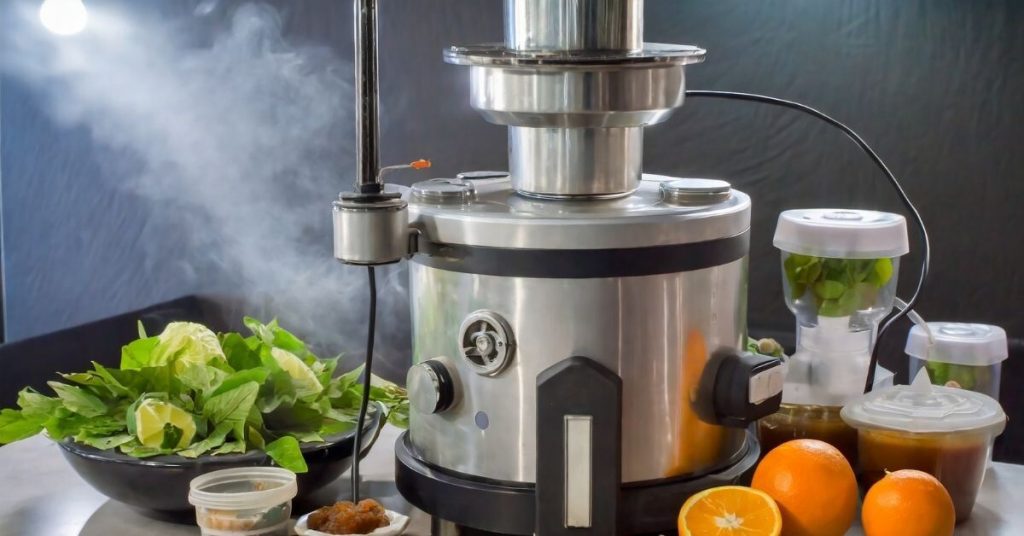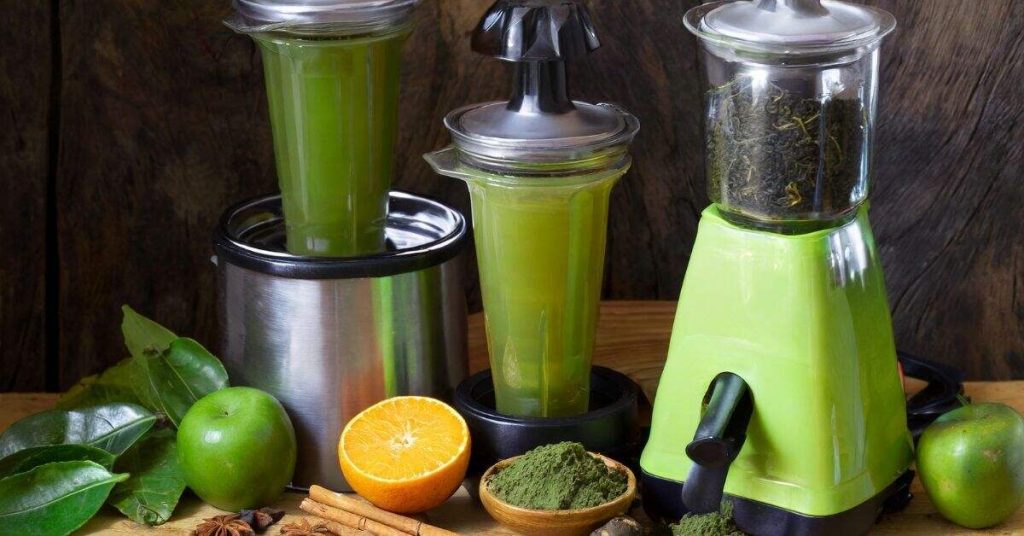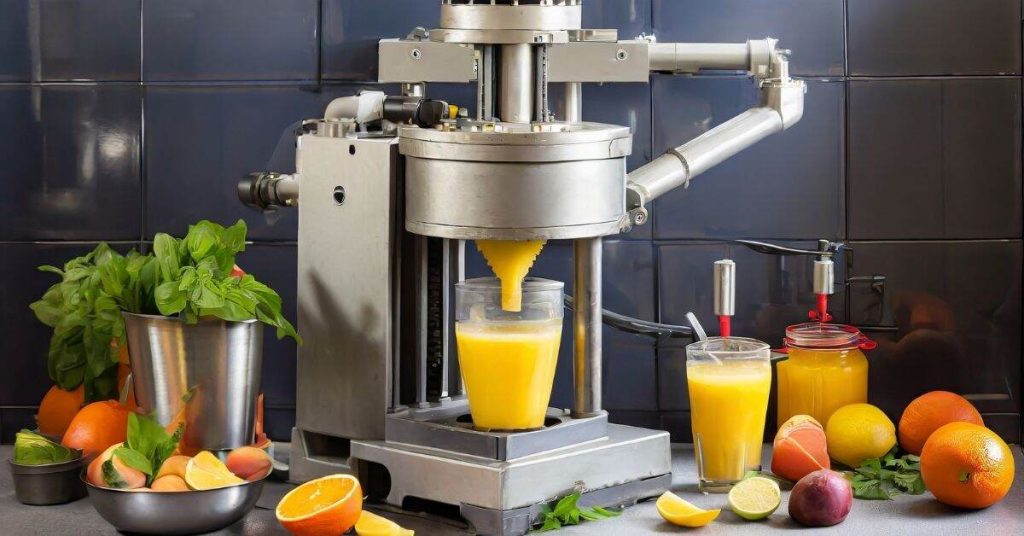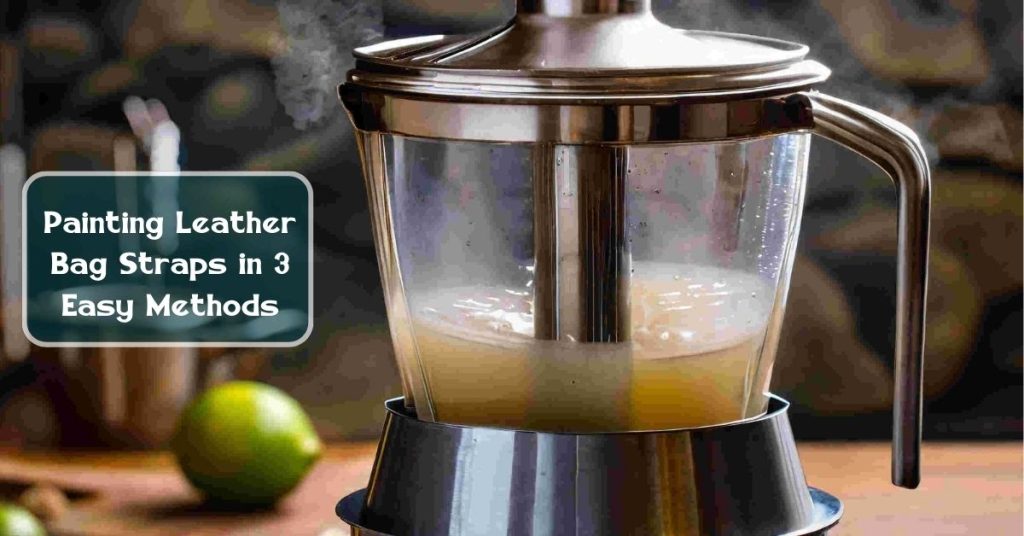Electric juicers require whole fruits and vegetables to function correctly. You can’t juice leafy greens like kale or wheatgrass in a typical electric juicer.
The leaves will spin around without releasing much juice. For the widest variety of produce, you’ll want a masticating juicer. An electric juicer works excellently for most common fruits and vegetables. Oranges, carrots, and beets are examples.
Ultimately, an electric juicer lets you quickly make fresh-squeezed juice at home. Nothing beats the flavor and nutrition you get from juicing your produce. Happy juicing!
I am an avid home chef and self-proclaimed kitchen expert. I love experimenting with new gadgets and appliances. My latest obsession is fresh-pressed juice. I recently invested in a high-powered electric juicer. If you’re curious about how these gadgets transform whole fruits and veggies into delicious, nutritious juice, you’ve come to the right place.
I’ve been testing my new juicer and am excited to share how it operates. I’ll also share some pro tips I’ve picked up.
Join me as I explore the inner workings of electric juicers. I will show you how to make them a vital part of your kitchen arsenal. So Let’s go to start.
How Juice Extraction Works in an Electric Juicer
As an avid juicer, I can tell you that electric juicers are efficient. They make quick work of extracting juice from fruits and vegetables.
Electric juicers use a spinning blade or auger to break down produce. They also separate the juice from the pulp. The juice collects in a pitcher while the pulp is ejected into another container. It’s a fast, mess-free way to get your daily dose of nutrients.
- Centrifugal juicers have a spinning blade. It shreds produce against a mesh filter, separating juice from pulp through centrifugal force. These are affordable but can produce foamy, oxidized juice.
- Masticating juicers crush and chew the produce to extract the juice. An auger slowly mashes the produce to get every drop of juice. Masticating juicers produce less oxidation and higher yields but at a higher cost.
- Twin-gear juicers have two gears that grind the produce into a pulp and then press it to extract the juice. They’re the most efficient but also the most expensive.
With an electric juicer, you get juice on demand. You don’t need to peel, core, or chop. Just wash and feed in whole fruits and veggies. You’ll have a pitcher of fresh-pressed juice in minutes. For juicing enthusiasts and novices alike, an electric juicer is a kitchen essential.
How Do Different Types of Juicers Work?
Each type of juicer works differently to extract the maximum amount of juice from fruits and veggies.
Here, I talk about the four most common types of electric juicers and how they Work.
1. Centrifugal Juicers
2. Masticating juicers work
3. Twin gear juicers work
4. Hydraulic press juicers work
Here’s a quick summary table for reference:
| Juicer Type | How it Works | Pros | Generates heat, oxidizes juice, lowers yield, noisy |
| Centrifugal | High-speed blades shred and centrifugal force separates juice | Fast, easy to clean, affordable | Higher yield preserves nutrients, quieter, drier pulp |
| Masticating | Slow-turning auger grinds and crushes | Higher yield, preserves nutrients, quieter, drier pulp | Slower, more expensive |
| Twin Gear | Two counter-rotating augers crush and grind | Highest yield, preserves enzymes, longest shelf life | Most expensive, longest processing time |
| Hydraulic Press | Hydraulic pressure squeezes out juice | Highest yield possible, good for leafy greens | Most expensive, requires manual effort, not for all produce |
1. Centrifugal juicers work

Centrifugal juicers grind fruits and vegetables into a pulp. Then, they spin the pulp at high speeds to separate the juice. The spinning basket creates centrifugal force. It pushes the juice through a filter and leaves the pulp behind.
I’ve found centrifugal juicers to be very efficient and easy to use. They typically have a large chute so that you can feed in whole fruits and veggies without much prep. The spinning basket quickly works on everything from carrots and beets to leafy greens and citrus. Within seconds, you have a healthy glass of homemade juice.
The one downside is that the heat generated during juicing can deplete some nutrients. But, centrifugal juicers are still very effective, and for most people, any loss of nutrients is relatively negligible. As with any juicer, drink your juice immediately after making it. This way, you’ll gain the most nutritional benefits.
Start with an affordable centrifugal model for those interested in juicing. They are versatile, easy to operate and clean, and produce juice with minimal fuss or mess.
Once you start juicing daily, consider upgrading to a masticating or triturating juicer. It’s for specific tasks. Most fruits and veggies only need a centrifugal juicer. It unlocks the nutritional power of fresh-pressed juice at home.
2. Masticating juicers work

My personal favorite is the masticating juicer. Centrifugal juicers shred fruits and veggies at high speeds. Masticating juicers work by slowly crushing and squeezing the produce. It extracts the juice.
Masticating juicers, also known as cold press or slow juicers, crush fruits and vegetables into a pulp. They then press and squeeze the pulp to release the juice. This method allows more nutrients to remain in the final juice. The slow speed also means less oxidation so that the juice can last up to 72 hours.
The drill, or screw-like part, is the key to how masticating juicers work. As you feed produce into the juicer chute, the auger pulls it in and crushes it against a screen. The auger spins at around 80 to 120 RPM, squeezing the juice from the pulp. The pulp is then ejected into a separate container. Some masticating juicers have stronger augers and more advanced screens. This allows them to make nut milk, sorbets, and even pasta.
Masticating juicers typically yield more juice and produce less foam than centrifugal juicers. They work at a slower speed so juicing time may take longer. But, for the quality and nutrition of the juice, the time is well worth it.
If you’re looking for a juicer that preserves more nutrients and antioxidants, a masticating juicer is the way to go. The juice from these juicers simply can’t be beat in quality and freshness. For any health-conscious juice enthusiast, a masticating juicer is a must-have appliance.
3. Twin gear juicers work
Twin-gear juicers use two gears to press and squeeze juice from fruits and vegetables. The gears rotate at a low speed, typically between 60 to 160 RPM, to minimize heat buildup and oxidation. This results in a higher yield of nutrients in the juice.
The twin gears grab the produce and draw it through the juicer, crushing and squeezing until all the juice has been extracted. The masticating action is efficient and can juice almost anything – from carrots and beets to leafy greens like kale and wheatgrass. I recommend juicing everything except bananas and avocados. They’re better blended into smoothies.
Some people complain that twin-gear juicers are more challenging to clean since there are more parts. But as long as you rinse the parts right after juicing. The benefits of a high-quality twin-gear juicer far outweigh any minor inconveniences.
Choose a twin-gear juicer if you want the healthiest and most nutritious juice with the highest yield and driest pulp. My kitchen would only be complete with one!
4. Hydraulic press juicers work

As a kitchen specialist, I’ve used my fair share of juicers. One type that stands out for efficiency and quality is the hydraulic press juicer. These machines use hydraulic pressure to squeeze the juice from fruits and vegetables.
Hydraulic press juicers work by first grinding the produce into a pulp. The pulp is then wrapped in a cloth and placed between two plates. When the juicer is turned on, pressure is applied to the plates via a hydraulic jack. This immense pressure squeezes the pulp and extracts the juice. It leaves behind the dehydrated pulp. These juicers can generate up to 10,000 pounds of pressure per square inch. It ensures you get the maximum amount of juice from your produce.
Hydraulic press juicers typically yield more juice than centrifugal juicers. They often have a longer shelf life. The pressing action also generates little heat, so more nutrients are preserved. But hydraulic press juicers are more expensive. They are also slower to operate and trickier to clean than centrifugal models. They also typically require more prep work, like cutting produce into small chunks.
A hydraulic press juicer is an excellent choice if high juice yield, quality, and nutrition are your top priorities. Despite the drawbacks, it’s a great choice. A quality centrifugal juicer will work great for most home cooks and juicing enthusiasts. It also requires less investment. As a kitchen specialist, I believe hydraulic press juicers produce the best results. If you want to get the most from your fruits and vegetables.
How to Use a Steam Juicer?

Steam juicers are a great way to extract juice from fruits and vegetables. They do not lose valuable nutrients. They work by using steam to heat the produce, causing the juice to release. Here’s a step-by-step guide on how to use a steam juicer:
It consists of two pots that stack on top of each other. The bottom pot holds water that is boiled to produce steam. The top pot, called the juice extractor, bears the fruit and has a spout for the extracted juice to pour out.
First, use a steam juicer to wash and chop your fruit into chunks. Apples, berries, and stone fruits all work great. Add the fruit to the top juicer pot. Next, add a few inches of water to the bottom pot and boil. Once boiling, place the juicer pot on top. The steam will rise and heat the fruit, releasing its juices.
As the fruit cooks, the juice drips into the spout where you’ve placed a pitcher or container to collect it. The steam also helps preserve the juice by preventing oxidation.
Check the progress after 30-45 minutes. The fruit should be very soft and mushy when done. If the juice flow slows or the fruit isn’t fully cooked, add more boiling water to the bottom pot to produce more steam.
Finally, remove the juicer pot once steaming and strain the collected juice through a cheesecloth or fine mesh strainer. Discard the cooked fruit mash. Let the juice cool, then refrigerate. Homemade juice from a steam juicer can last up to a week.
Enjoy your fresh-squeezed juice! The steam juicer is an excellent tool for any home cook looking to make naturally sweet and flavorful juices.
Conclusion
After reading this, you will understand how an electric juicer operates. I covered the basics of how an electric juicer works. These machines quickly extract juice from your favorite fruits and vegetables.
They spin at high speeds. It separates the juice from the pulp and fiber. It leaves you with a smooth, nutrient-packed drink.
Now, it’s incredibly easy to get fresh-squeezed juice whenever you want. I hope this overview of the juicing process and the different parts of a juicer was helpful.
If you have any other questions about juicers or kitchen equipment, feel free to ask. I’m always happy to share what I’ve learned over the years.

Tammy E. Edison is a distinguished specialist in the world of kitchen appliances, and she is proud to be a part of the dynamic team at kitchenusers.com. With a background in engineering and a passion for culinary innovation, Tammy E. Edison has established herself as a go-to expert for all things related to kitchen appliances technology.



5 thoughts on “How Does An Electric Juicer Work – [Easy Way 2024]”